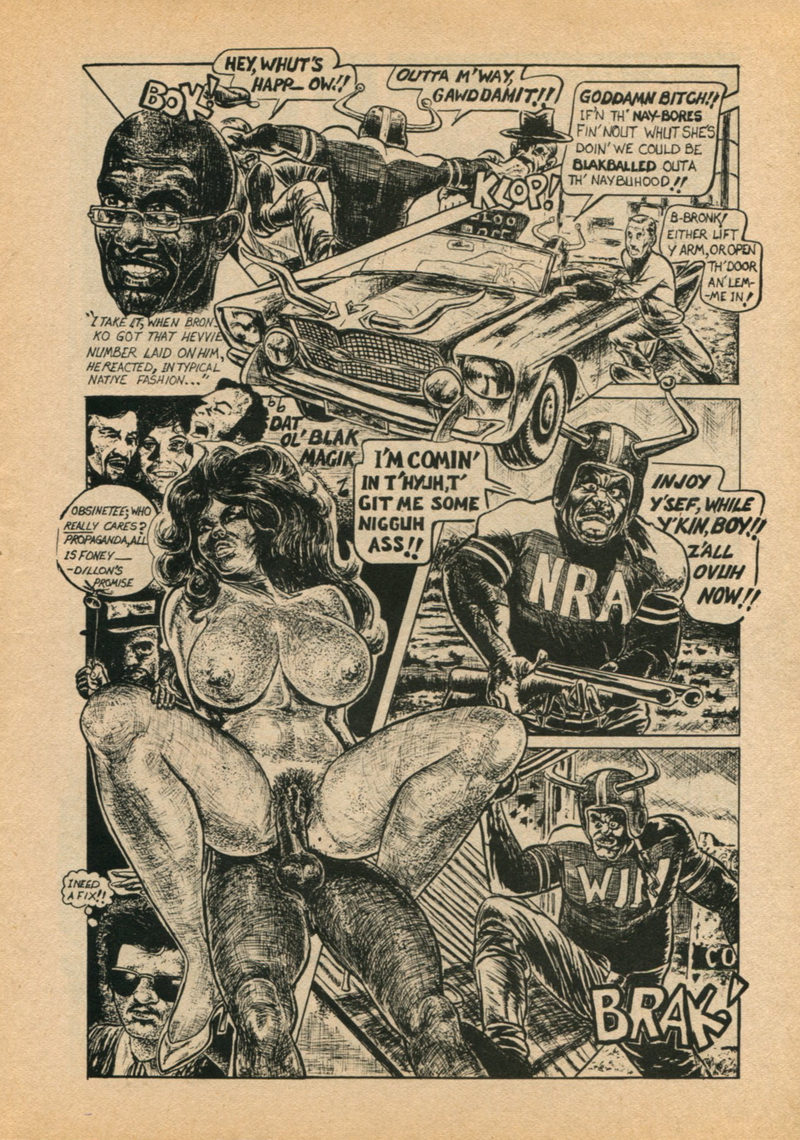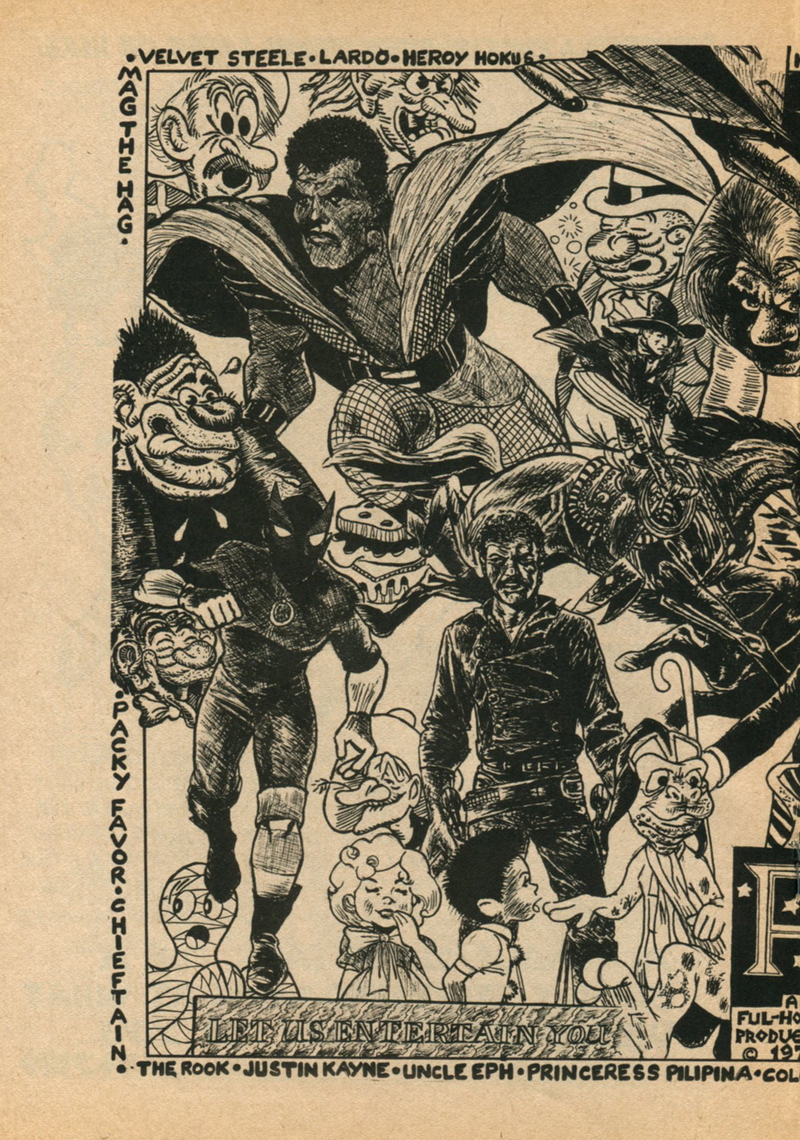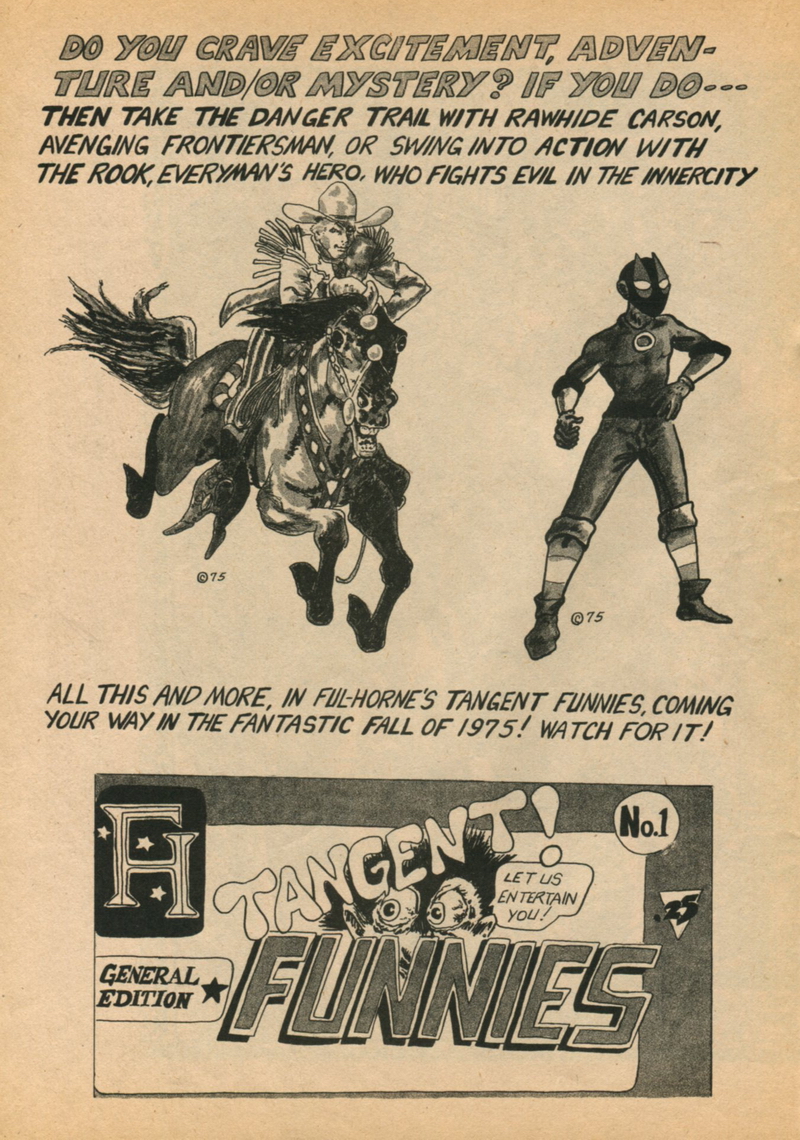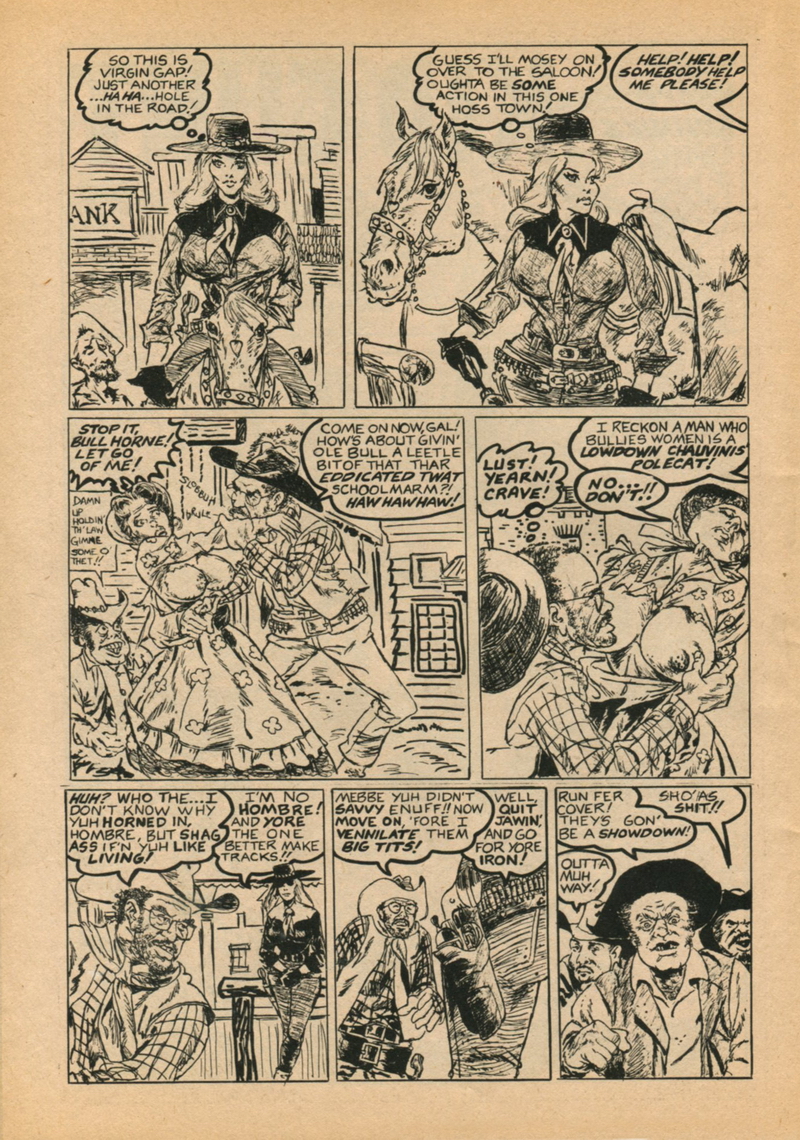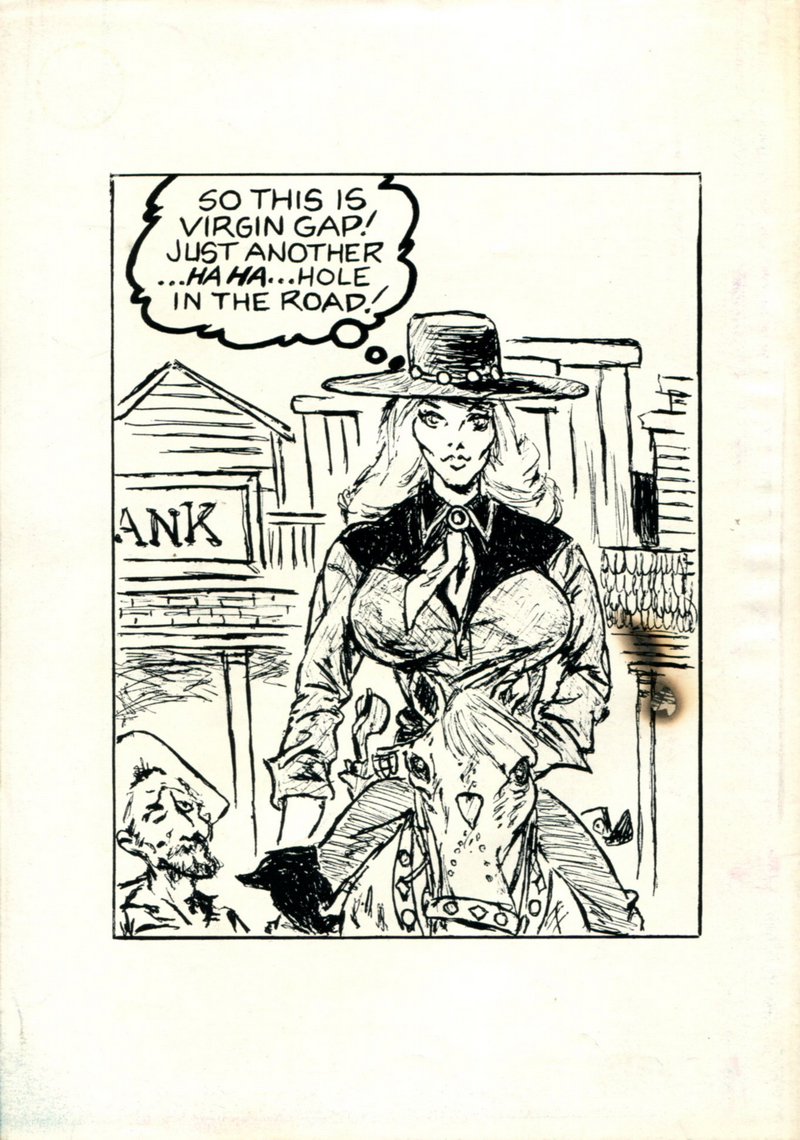white whore funnies

white whore funnies
Ful-Horne Productions 1975
By Wendy Browne
The face of Western comics is changing, but it’s been a long road and a journey that still has many hills to climb. Black characters are taking on more prominent roles in the panels we read, and more Black creators are shaping their stories behind the scenes. But what of the creatives who came before? This column traces the path of Black comics creativity throughout the decades, with each year focusing on a book that features a Black writer, artist, colourist, letterer, or editor. From underground comix through Black Panther and beyond, this series will reveal the evolution of diversity in the comics industry, and shed some light on the unsung Black heroes that have helped to shape it.
Larry Fuller’s Ebon #1 was the first titular Black comic book superhero, published by an all Black creative team of one. Both the character and its creator are a significant part of Black comics history, but Fuller’s path did not go where one might have expected. Ebon never got to save humanity from racism, poverty, and hate in a second or third issue, but Fuller went on to be a hero in his own right, carving out a space as one of the few African American creatives in the indie comics scene. Teaming up with Thomas W. “Raye” Horne, the duo formed Ful-Horne Productions in 1975 and produced raunchy adult underground comix, including the legendary White Whore Funnies.
Fuller was introduced to Horne by Gary Arlington, a San Francisco comic shop owner with strong connections in the underground comix scene. Arlington was also the printer and distributor of Ebon #1. With such little representation for African American creatives in indie comics, it was fortunate that the pair hit it off and became friends and then spent a few years learning to work together as business and creative partners. During this time, they developed a number of characters that encompassed many different genres, including Westerns, science fiction, superheroes, and fantasy. All but one of these creations were published.
Instead, their first venture under Ful-Horne Productions in 1975 was called The Funny Book. It was a grossly fatphobic black and white humour comic by Gary Figari, starring a character named Lardo. It did not sell well. Fuller later attempted to revive the series with two more volumes of The New Funny Book. Figari returned for the second volume, with additional comic strips by Dan O’Neill, among others. By the third volume, Fuller attempted to take the book in a whole new direction, but it too failed to find interest with any particular audience.
Fortunately, in that same year of 1975, Fuller and Horne came out strong with White Whore Funnies, the adult title that put their name on the adult comics map and even earned them space on porn shop shelves thanks to its explicit content, well-drawn imagery, and its production value. The first issue was 32 pages long, printed on high quality, smooth newsprint. It went on to be reprinted several times and the series continued into 1979, earning itself a #5 in Penthouse Magazine’s July/August 1989 ranking of the “13 Dirtiest Most Freaked Out Comix Ever Published.”
White Whore Funnies served as a parody of interracial relationships and romances between White women and Black men. Working under the pseudonyms Wiley Spade and A. Christian Black, Horne and Fuller worked tongues firmly in cheeks on this series, while pulling no punches with satirical social commentary aimed at all parties. The disclaimer for the second issue reads:
Don’t go another further! Not until I warn you! I wanna confirm your suspicions and tell you that this is White Whore Funnies # two, the dirtiest comic ever published! Topic: that most sensitive of subjects—interracial sex!… So if you picked it up by mistake, put it down and move on ’fo’ you git your feelings hurt! Specially you jive ass white boys! This book might knock you down, tear you up and make a n***** lover out of your girl friend.
The civil rights case of Loving v. Virginia was not even a decade old at this point. Many states overturned the Supreme Court ruling, maintaining a ban on interracial marriages well into the ‘70s, however, such relationships, illicit or otherwise, continued across the country. White Whore Funnies’ content certainly held significance for its time, pointing a sharp finger at what was reflected in reality.
Heavily inked lines, women with bulbous breasts, and dialogue thick with slang colour the black and white comic. Strips vary from raucous musical interludes to clandestine encounters while husbands are away. A grudging favourite, if I had to pick just one, is Kid Cunt, the cowgirl who rides into town in “Showdown in Virgin Gap,” sending the men running in fear of her greased lighting quickdraw.
Fuller described White Whore Funnies as a “a premiere effort from two hungry amateurs just beginning” that was “frankly ahead of its time.” However, sexism and misogyny are rampant throughout, making its satire somewhat less appealing nowadays. Still, the issue epitomizes the indie comics scene’s opportunity for creators to express themselves as they please, no matter how outrageous the content. “Never had so much fun, before or since,” writes Fuller of his creative experience with White Whore Funnies. “Not, at least, involving a comic book.”
The business savvy that led to the success of White Whore Funnies and, shortly thereafter, Gay Heartthrobs, the first comic aimed at a homosexual audience, proved Ful-Horne’s (later Fuller Inkwell) worth as an integral voice for marginalized communities within the underground comix movement. In 2007, Fuller was finally recognized for his contributions as a recipient of the Glyph Comics Awards Pioneer Award, but, sadly, there’s not much to his story beyond that.
Fuller and Horne maintained their pseudonyms to protect potential future careers in mainstream comics, but that future never came about. Though they worked together well, in the ‘80s, their differences drove them to separate pursuits. Underground cartoonist Jay Kinney describes Fuller as a “fringe member” of the underground comix movement. Whether this was by his own choice, or the result of a largely white movement that ironically did not make Black voices feel as welcome in this marginalized comic world as it should, is left to be determined. But his contribution to the underground comix industry serves as inspiration to Black creators both then and now.
Eventually, Fuller and Horne’s contributions to comics tapered off into the 1990s, but a chance reunion outside of a comic shop that prompted what could have been a resurgence of their satirical brilliance was cut short when Horne died of a heart attack in June of 1995. Writes Fuller in a tribute to his long time friend:
We had differences, some serious, some really serious, and some just ridiculous, that could get in the way of creative efforts. Too much to detail here. We finally agreed, though, that similarity is way overrated! The brother was truly one of the funniest people I ever met (even knowing comedians, writers, dozens of dancers, and lots of “creative wannabes” of every stripe), whose sometimes brilliant, and, yes, occasionally dim wit overlooked no target of opportunity, near or far, not the least of which would be yours truly, but more often than not none other than himself.
White Whore Funnies #1
By Larry Fuller with Raye Horne
Published in 1975 by Ful-Horne Productions
0. [“My God!!”] • 1. [“You can get it if you really want!” J.C.] • 2. [“I’ll serve Joe and myself, Hon— you don’t mind a little white meat, do you, Joe?”] • 3. Punch Line! • 4. [“Well, yes, I got your tellygram, son, but I thought it said you wuz bringing me a pair of white britches!”] • 5. [“Well, Wiley, now that you have my complete and divided attention, what do you intend to do with it?”] • 6. [“There’s a fuckin’ revolution going on here!”] • 7. Appalling Love Story • 8. Jungle Madness • 9. Showdown in Virgin Gap! • Kid Cunt • 10. Whitegirlmaniak Captured! • Willie Lee Nogoodnik • 11. [Kid Cunt] • Kid Cunt













